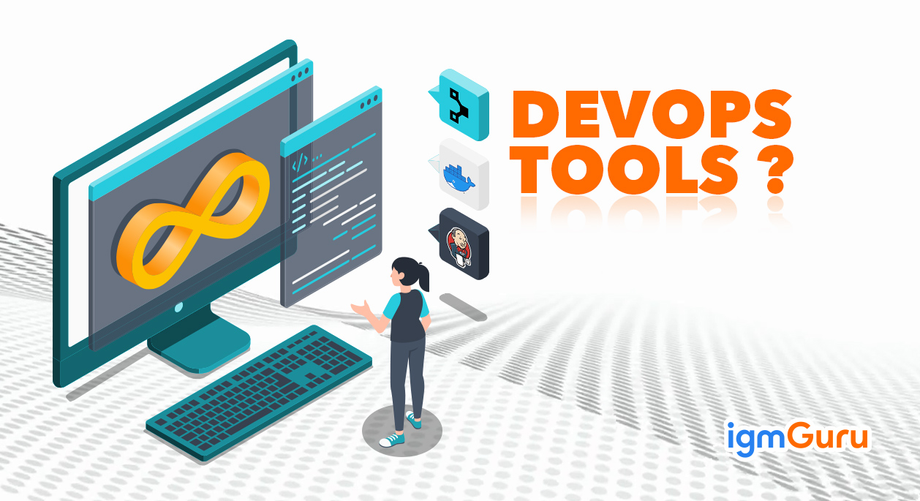What are DevOps tools?Posted by Christina Alpanda on December 15th, 2020 DevOps is a fixed of practices that highlights collaboration, communique, and automation for the duration of the application improvement lifecycle. Continuous Delivery permits teams to launch a build after continuous testing mechanically any time. The integration of Development and Operations brings a new angle to software program development. If you’re new to DevOps practices, or seeking to enhance your current approaches, it can be a venture to know which device is first-class on your crew. We’ve prepare this list to help you make an knowledgeable decision on which equipment ought to be a part of your stack. So, permit’s check the 10 great DevOps equipment, from automated construct gear to software overall performance tracking platforms. The first-rate DevOps tools for 2020
Your DevOps device stack will need a reliable construct tool. Apache Ant and Maven ruled the automated construct tools marketplace for many years, however Gradle showed up at the scene in 2009, and its popularity has steadily grown considering then. Gradle is an extremely flexible device which allows you to write your code in Java, C++, Python, or other languages. Gradle is likewise supported with the aid of famous IDEs which include NetBeans, Eclipse, and IntelliJ IDEA. If that doesn’t persuade you, it'd assist to recognize that Google also chose it as the respectable construct device for Android Studio. The best thing approximately Gradle is incremental builds, as they store a pleasant quantity of collect time. According to Gradle’s overall performance measurements, it’s up to 100 instances quicker than Maven. This is in part because of incrementally, but additionally because of Gradle’s construct cache and daemon. The construct cache reuses task outputs, at the same time as the Gradle Daemon maintains build records hot in reminiscence in-among builds. All in all, Gradle allows quicker transport and comes with a number of configuration possibilities.
Git is one of the maximum famous DevOps gear, broadly used throughout the software enterprise. It’s a dispensed SCM (source code control) device, loved with the aid of far flung groups and open supply contributors. Git allows you to music the progress of your development paintings. You can store distinct versions of your supply code and go back to a previous model when important. It’s additionally first-rate for experimenting, as you could create separate branches and merge new features handiest after they’re ready to go.
Jenkins is the move-to DevOps automation tool for many software program development groups. It’s an open source CI/CD server that lets in you to automate the distinct ranges of your transport pipeline. The predominant reason for Jenkins’ reputation is its large plugin surroundings. Currently, it offers greater than 1,000 plugins, so it integrates with nearly all DevOps tools, from Docker to Puppet.
Bamboo has many pre-built functionalities that you need to installation manually in Jenkins. This is likewise the reason why Bamboo has fewer plugins (round 100 in comparison to Jenkins’ one thousand+). In truth, you don’t want that many plugins with Bamboo, because it does many stuff out-of-the-box. Bamboo seamlessly integrates with other Atlas Sian merchandise inclusive of Jira and Bitbucket. You also have get right of entry to integrated Git and Mercurial branching workflows and check environments. All in all, Bamboo can prevent a variety of configuration time. It additionally comes with a greater intuitive UI with tooltips, auto-of entirety, and different available features.
Docker has been the primary field platform considering that its release in 2013 and keeps to improve. It’s additionally thought of as one of the maximum essential DevOps equipment accessible. Docker has made containerization popular in the tech international, particularly as it makes dispensed development viable and automates the deployment of your apps. It isolates applications into separate bins, in order that they grow to be portable and greater secure. Docker apps are also OS and platform independent. You can use Docker boxes in place of virtual machines such as Virtual Box.
A Kubernetes cluster includes one grasp and several employee nodes. The grasp node implements your pre-described regulations and deploys the bins to the employee nodes. Kubernetes will pay interest to the whole thing. For example, it notices whilst a worker node is down and redistributes the packing containers every time it’s necessary. 7.Puppet Enterprise Puppet Enterprise is a go-platform configuration management platform. It permits you to control your infrastructure as code. As it automates infrastructure control, you can deliver software quicker and greater securely. Puppet also affords developers with an open-source device for smaller projects. However, if you are coping with a larger infrastructure, you may discover cost in Puppet Enterprise’s more capabilities, consisting of:
With Puppet Enterprise, you can manipulate multiple groups and hundreds of resources. It robotically is aware relationships within your infrastructure. It offers with dependencies and handles screw ups neatly. When it encounters a failed configuration, it skips all the dependent configurations as nicely. The first-rate factor about Puppet is that it has extra than 5,000 modules and integrates with many famous DevOps gear.
Ansible is a configuration management device, much like Puppet and Chef. Its main selling factors in comparison to different similar DevOps tools are simplicity and simplicity of use. Ansible follows the equal Infrastructure As Code (IAC) technique as Puppet. However, it makes use of the exceptional simple YAML syntax. With Ansible, you can define obligations in YAML, even as Puppet has its own declarative language. Agentless architecture is another frequently referred to function of Ansible. As no daemons or sellers run within the heritage, Ansible is a comfy and light-weight answer for configuration control automation. Similar to Puppet, Ansible also has numerous modules. 9.Nagios Nagios is one of the most popular loose and open supply DevOps monitoring equipment. It allows you to screen your infrastructure so you can locate and fix troubles. With Nagios, you can preserve facts of occasions, outages, and screw ups. You can also preserve an eye on tendencies with the help of Nagios’ graphs and reports. This manner, you can forecast outages and errors and stumble on safety threats. Nagios gives four open source tracking answers:
Nagios Core is a command line tool, with all of the simple functionalities. You also can choose Nagios XI that comes with an internet-based GUI and monitoring wizard. Nagios writes a handy comparison of their talents. Nagios Log Server lets you seek log statistics and installation signals approximately capability threats. And, Nagios Fusion permits you to monitor multiple networks at the same time.
Raygun is a global-class error tracking and crash reporting platform. Application overall performance tracking (APM) is its maximum recent product. Raygun’s DevOps tool allows you diagnose performance troubles and tracking them returned to the precise line of code, feature, or API call. The APM tool additionally fits well with Raygun’s blunders management workflow. For example, it routinely identifies your highest precedence problems and creates troubles for you. Raygun APM let you make the most out of other DevOps equipment, as you're continually notified approximately the troubles. Since it automatically hyperlinks errors lower back to the source code, Raygun brings Development and Operations together via offering one supply of fact for the entire group the reason of errors and overall performance problems. Uses of DevOps: You can benefit data within the concepts of continuous development and deployment, automation of configuration management, inter-crew collaboration and IT carrier agility, the usage of DevOps tools such as Git, Docker, Jenkins and more. Finding the nice DevOps gear takes some trying out and experimentation. It generally takes extra time to set up and configure open-supply equipment. Most industrial DevOps tools include free trials that can help you check and examine them at no cost. It all boils down to your desires and desires. For more information about Devops Online Training, visit igmguru.com. Like it? Share it!More by this author |



